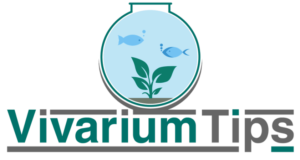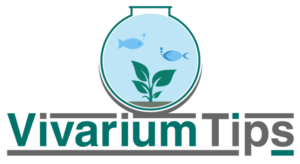For people who are unaware of springtails or they’re beginning to learn about this fascinating creature, they might think – hey look at this cute bug. Well – It’s not considered a bug.
The world of springtails is truly fascinating.
Curious minds around the world often ask themselves this question before even considering raising or going near springtails:
Are springtails harmful? How will they react near humans, pets, and in certain ecosystems?
First, and foremost – springtails are friendly creatures that can be beneficial to the environment. Secondly, they can be quite an invasive species. I’ll tell you why.
In this article “Are Springtails Harmful To Humans, Pets, And Ecosystems,” you will learn:
- The brief introduction of springtails
- Whether they are harmful or not
If you’re familiar with springtails, feel free to use the table of content and skipped the first section of this guide.
Disclaimer: There may be Amazon affiliate links on VivariumTips.com – When users purchase through an affiliate link, there will be no additional cost to the purchaser. Instead, I will earn a commission from your purchases.
Springtails: Brief Introduction
If you’re reading this springtail guide, chances are that you’re interested in raising and keeping these hexapods. These little critters can survive extreme temperatures by making use of the availability of protein in their bodies.
They’re a large deal when it comes to helping run the ecosystem. The reason why springtails are beneficial is that they’re able to consume unnecessary waste such as decaying matter, bacteria, and mold.
Did you know?
Many vivarium tank owners keep springtails as pets to help the environment in their ecosystem.
Now – do you think springtails are harmful? Let’s see.
Are Springtails Harmful?
Let’s move down the list and see how springtails react towards certain subjects.
Humans + Springtails
When it comes to humans and springtails, these hexapods aren’t harmful to humans. Although, they can be quite hectic if you’re trying to catch them or clean them after being scattered everywhere.
- Springtails do not bite humans
- They don’t damage food-related products
- Your furniture and clothes are safe. They have no interest in that.
Pets + Springtails
Similar to humans, springtails aren’t harmful to pets. Whether it’s your aquatic pets or reptile creatures, springtails have no interest in them. If you have tiny geckos or fish, chances are – they’ll consume these springtails.
- Springtails can become food for your reptile pet(s)
- They can float on water, which is another source of food for your aquatic pet(s)
- They have no interest in animals, which means zero harm.
But don’t worry!
An entire army of springtails can reproduce as quickly as becoming three meals a day for your pet.
Depending on the temperature, springtails can reproduce at a rapid rate.
Ecosystems + Springtails
You can find springtails just about anywhere. You can find them outside in your garden or even in the forest.
Do springtails actually harm the ecosystem?
No, springtails do not harm the ecosystem. In fact – they are actually beneficial. Springtails are so beneficial to where they even earned the nickname ‘janitor’ from people.
They will clean up the decaying matter in almost any type of ecosystem. They can survive extreme temperatures. They’re almost everywhere.
By being on the bottom of the food chain, springtails help sustain the life cycle in all aspects.
Springtail-Related Questions
Now that you have an understanding of whether springtails are harmful or not – I will answer common springtail questions related to this article. If you have any questions, don’t hesitate to comment below.
Do Springtails Carry Disease?
No, springtails aren’t known to carry pathogens nor disease according to CannaGardening.com
Do Springtails Crawl On Humans?
In the United States and Canada alone, there are numerous species of springtails. It’s estimated to be in the hundreds. These creatures live in damp areas where they can consume fungi, bacteria, and other decaying matter. Springtails aren’t attracted to humans.
Can Springtails Infest Your House?
For some homeowners, springtails can be mistaken as fleas. After all – these guys are nicknamed ‘snow fleas’ to begin with. Springtails don’t enter homes for no reason.
The only time they will enter your house is if:
- They discover a moisty part of your house such as the bathroom for example
- They will infest areas where there is mold. This is a great indicator to find out that you need to solve your mold problem.
Can Springtails Live In Your Hair?
Springtails won’t live in your hair as they’re not parasitic to humans. These hexapods are more known as a nuisance.
Are Springtails More Active At Night?
If you didn’t know, springtails used to be considered insects. That all changed. Today, people describe them as hexapods.
Springtails are known to be more active during the afternoon until the golden hour. So no, they are not more active during night time.
Where Do Springtails Bugs Come From?
Springtails can be found almost anywhere where there is moisture in areas like soil, decaying plants, etc. You can also find them under giant rocks/stones, logs, etc.
If you have any more questions, feel free to comment right below this article. I’ll be glad to answer your question as soon as possible and I’ll even update the question to this section to help future readers.
From VivariumTips,
Overall, from my personal research and discussion with several springtail enthusiasts – they are completely harmless to humans, pets, and the environment/ecosystem.
Although they can be considered a nuisance, you shouldn’t have to worry about damages and harm coming from these guys.
If you love learning about springtails, be sure to check out my other springtail-related articles:
- What Do You Feed Springtails?
- Temperate Vs. Tropical Springtails
- Finding Springtails For Sale Online
- Using Springtails As Mold Control
- How To Catch Springtails In The Wild?
- How To Remove Mites In Springtail Culture?
If this springtail guide helped you in any way, don’t forget to share with a friend to help support VivariumTips.com 🙂
You can purchase springtails online. For a list of collections, click here.

